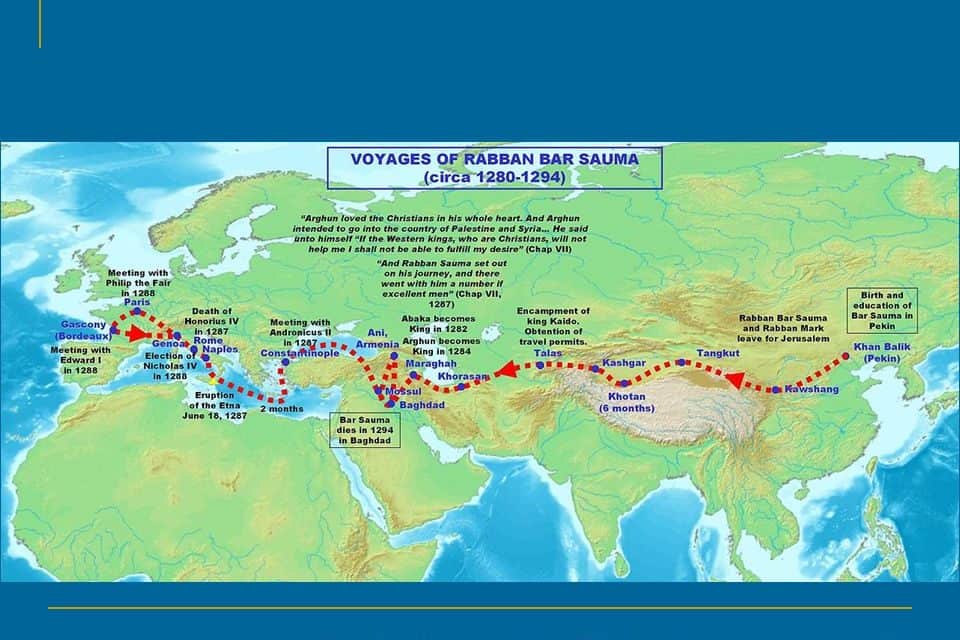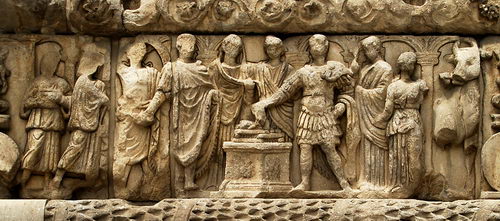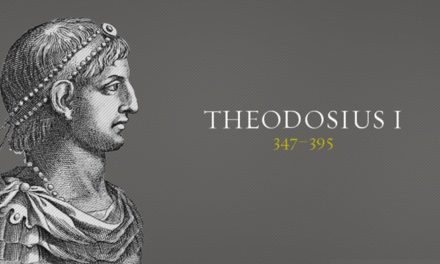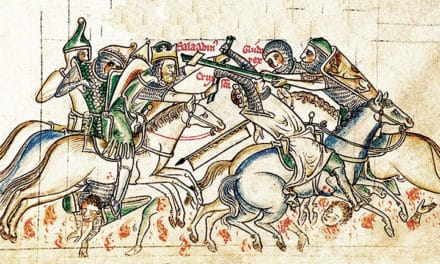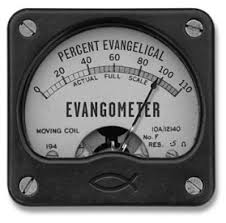This is Episode 4 in the Saga of Rabban Sauma.
After their 6 month rest at the oases of Khotan, Bar Sauma & Markos renewed their journey West. Cautious of the fighting taking place between Khubilai Khan and his cousin Khaidu, their guides escorted them around the regions of greatest threat, lengthening the journey by several weeks. They stopped at a Talas, a town in what is today Kyrgyz.
500 yrs before, Talas was the scene of one of the most important battles in history. The forces of the Tang Dynasty smashed into those of the Arabian Umayyads. Talas was Khaidu’s HQ. And while the two monks had before been leery of encountering the treacherous would-be khan, they now decided to present themselves before him. They were careful to avoid any hint they were emissaries of his enemy Khubilai. They were just two monks on a spiritual quest, pilgrims to the birthplace of their Faith.
Though they already had the precious letters-patent form the Great Khan, they knew securing another passport from Khaidu might grease the wheels for any future local chieftains who aligned with him. So after placing a blessing on Khaidu, they requested the precious letters of passage.
Sauma & Markos’ passage across this region, embroiled as it was in war, proved typical for East-West trade and travelers at this time. While groups found all kinds of causes to fight over; ethnicity and religion being foremost, when it came to trade, such distinctions were often set aside in favor of an apolitical posture that was willing to overlook the reasons for war. This allowance for trade across such a wide spectrum of people and faiths was due to the realization trade was a major source of income to the various kingdoms. Harming or hindering it in one area meant diminishing it across the board. So with rare exception, trade was regarded as apolitical.
Leaving Talas, the next portion of Markos and Sauma’s journey was yet another challenge to endurance. They headed southwest into Khorasan in northeastern Persia, skirting present-day Afghanistan. Crossing rugged mountains and deserts little better than the Taklamakan which had just about ended them, they lost a good part of their baggage. The mountains soared so high travelers were beset by intense cold, thin ice, howling wind, and the ever-present threat of avalanches.
This was also an area fraught with local warlords who survived by robbing caravans. The problem of brigandage was so severe, the Mongols set rules for how caravans were to protect themselves. Disheartening to all who traveled here were the frequent skeletons of camels, pack animals, and humans found regularly along the path.
But this was the last leg of their journey from the Far to the Middle East. They finally arrived in the first of their destinations; Persia. But they were likely shocked at what they found. This eastern region in Persia had suffered terribly at the hands of the Mongols. If a city surrendered when first approached, it was spared. If it resisted, the entire population was wiped out. Many cities of this region had thought to resist the invaders and had suffered for it. But as the invaders moved southwest into the heart of the greater Persian plateau, word spread and cities capitulated. The Mongols then recruited skilled craftsmen and the educated into their burgeoning bureaucracy. They drew from Persian Muslims, Jews, and Christians.
The year was 1280 when Bar Sauma & Markos settled into a monastery on the outskirts of Tus [Toos], Mongol capital of Khorasan in the northeast frontier region of Persia. Tus was the birthplace of several historical notables as well as the burial place of the great Caliph Harun al-Rashid, whose reign and court provided the literary base for the Arabians Nights.
Tus was often the scene of conflict between Shi’a and Sunni pilgrims because not only did it hold the tomb of the Sunni al-Rashid, it was the burial place for the 8th Shi’a Imam Ali al-Rida.
While Islam was the predominant religion in Persia at that time, there was a sizeable population of Jews, Buddhists, and Christians as well. Prior to the arrival of the Mongols, the majority Muslims ruled these minority faiths with a begrudged tolerance. After the Mongol Conquest, the Muslims protested that they were treated no better than the others. They believed their vastly superior numbers ought to gain them advantages. But the Mongols enforced their standard policy of religious tolerance. Muslims worried when they saw large numbers of Nestorians promoted into high office in the Mongol system. But the Mongols weren’t showing a religious bias; they were merely filling the ranks of their civil government with the most educated, who happened to come from the highly literate Nestorian clergy.
Having recouped their strength in Tus after their arduous passage across Central Asia, Bar Sauma and Markos renewed their journey West. Resupplied by the local Christian community, they set out across Azerbaijan, skirted the Caspian Sea and Dashti Kavir Desert and headed toward Baghdad. Baghdad was HQ’s of the Nestorian Church, home of their Great Patriarch, Mar Denha.
But if they hoped to meet the grand leader of their church, they didn’t need to travel to Baghdad to do so. Mar Denha was visiting Azerbaijan at the same time Sauma & Markos were passing through. He granted them an audience in the Mongol Capital of Maragha. The Ilkhan Hulegu had made Maragha a gem, building a large observatory there for the famed astronomer Nasir al-Din Tusi. This observatory was a mecca that attracted Muslim scholars from all over. It housed several ingenious astronomical devices and it’s growing body of discovery and work became the envy of Chinese and Europeans scholars alike. The attached library held 400,000 volumes. So impressive was this center of learning, wealthy Muslim leaders and merchants established grants to fund it.
The City provided a fitting stage for the meeting of the two Chinese monks and their church’s leader. Markos and Bar Sauma bowed before him and amidst many tears expressed their gratitude they’d made the difficult journey to see him and carry the collective greetings of his people and churches in the Far East. Mar Denha was deeply moved by the expression of the faith their journey had demonstrated. He was surprised to hear the two monks had met with and been sent on their way with official endorsement by the Great Khan Khubilai. When they said their ultimate goal was to visit the birthplace of the Faith, the Patriarch assured them God would see they made it. After a few more days of meetings with the Mar Denha, they asked for permission and blessing to visit sites of interest to their Faith. There were tombs, churches, and shrines to visit in and around Baghdad, current HQs for the Church of the East. It’s oldest and most revered site was in nearby Ctesphon which they also wanted to visit.
In Baghdad, they were given a tour of the Great Church of Koke and the ancient monastery of Mar Mari, named for the early 4th C missionary who planted the church in Ctesiphon.
Bar Sauma’s account lists the sites they visited in the many towns between the Tigris and Euphrates Rivers. Besides cataloging these shrines, he gives little description of what life was like for the locals.
Other records tell us Baghdad of 1280- was a seething cauldron of tension between Muslims and Christians, who were universal of the Nestorian brand. The previously mentioned Catholicos Mar Denha had stirred the pot by inciting his flock into hostility toward Islam. When an apostate Christian became a Muslim, Mar Denha ordered his execution by drowning in the Tigris. The Muslims responded by trying to assassinate Mar Denha and burning down his house. Three years later, when an attempt was made on the civil governor’s life, Christians and Muslims blamed each other. So local Nestorian congregations were greatly encouraged by the arrival of the two monks as it seemed to signal support from the Great Khan. After, all they did bear his august approval in tangible form in that letters-patent they carried. They may have been in the minority, but Khubilai and sent them succor in Sauma & Markos.
The two ended their tour of Nestorian sites at the Mar Michael monastery in Arbil. Having been so long away from the monk’s life, they decided to renew it by staying in the monastery as participants for a season before setting off for Jerusalem.
While Mar Denha had originally applauded and affirmed their plan to travel to Jerusalem, he changed his mind. He’d seen how the two monks had generated hope and much-needed vitality to the increasingly moribund church he presided over. He wrote them a letter, berating them for thinking only of themselves in entering the monastery at Arbil. How dare they seek personal peace, he said, when their brothers and sisters were beset by dangers at the hands of their Muslim neighbors, left & right?
Mar Denha was the Catholicos, the Patriarch of the Nestorian Church by selection of church officials. But the Mongol ruler reserved the right to affirm such elections. It had been 15 years and the Mongol Ilkhan, Abakha, still had not officially endorsed him. Abakha was Buddhist but married to a Christian. Because Mar Denha was a well-known antagonist and rabble-rouser in matters involving the majority Muslims, Abakha balked at granting Denha the official title. He knew to do so would risk riots form his Muslim subjects.
Mar Denha saw in the two Chinese monks the lever to move the Ilkhan. After all, they enjoyed the favor of The GREAT Khan, did they not? Serving as Khubilai’s unofficial envoys, their counsel could easily be passed off as a directive from the Far Eastern court.
So, guilted into it, Sauma & Markos left the monastery, trekked back to Baghdad and met with Mar Denha. They agreed to approach the Ilkhan >> IF >> Denha would provide them an escort who could return him the credentials verifying his title and office, as they continued on their way to Jerusalem. Though the monks had previously treated Mar Denha as a near god-like figure, these shenanigans unmasked him as grasping, power-hungry, & self-serving. Because of the way they’d been treated by other Nestorian leaders back in China, they didn’t trust the Catholicos to keep his word. They knew if they secured the treasure credentials, they’d make themselves too valuable a resource to let go. So their intention was to high tail it out of town as soon as they got Mar Denha what he wanted. So eager was he for the Ilkhan’s recognition, Denha agreed.
Eager to be on their way and out of Denha’s grasp, Sauma & Markos traveled to Tabriz, Abakha’s capital on the fringes of Azerbaijan.
What would the Ilkhan say to their request for recognition of the scheming Mar Denha as Catholicos? We’ll find out next time in Part 5.

